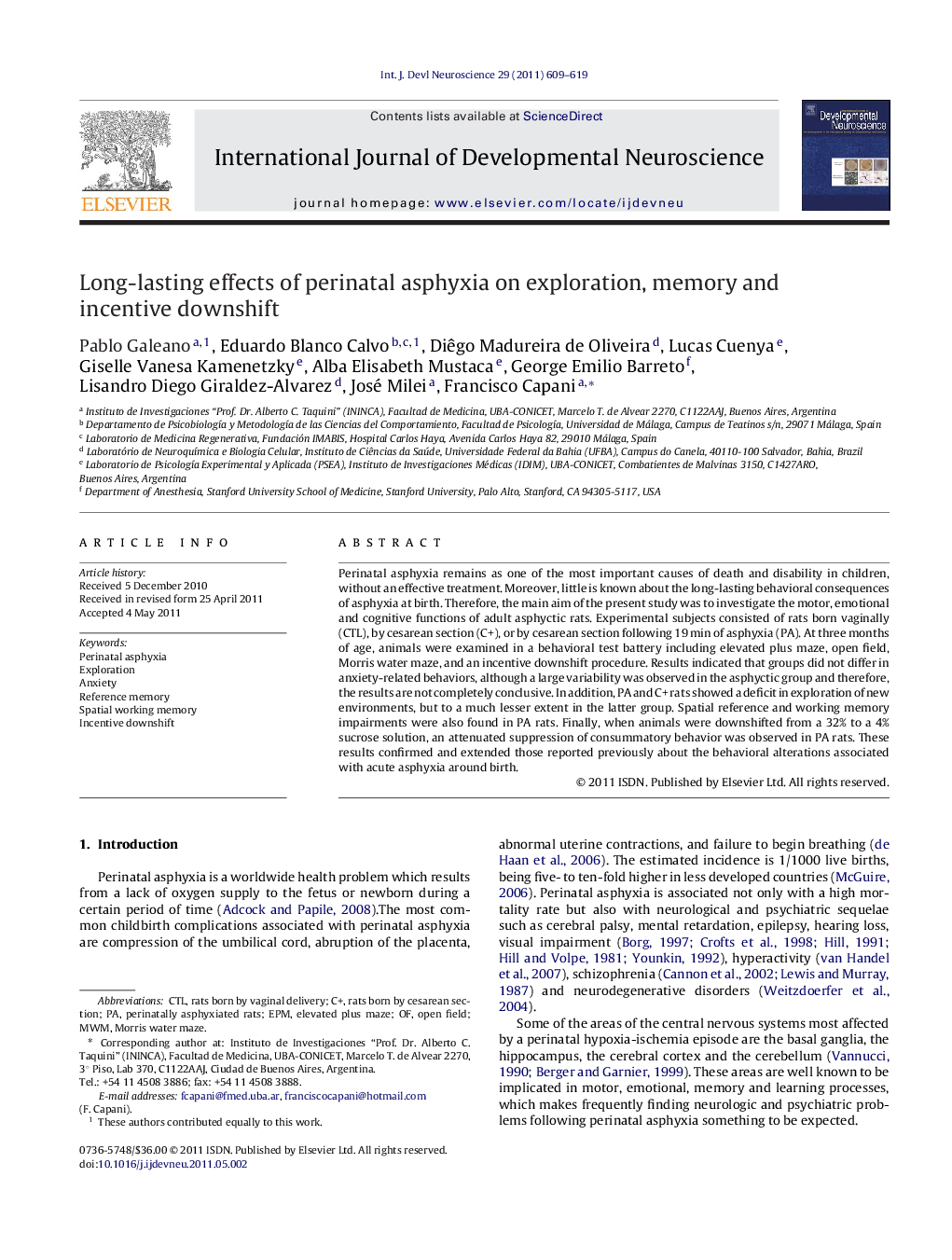| Article ID | Journal | Published Year | Pages | File Type |
|---|---|---|---|---|
| 2786484 | International Journal of Developmental Neuroscience | 2011 | 11 Pages |
Perinatal asphyxia remains as one of the most important causes of death and disability in children, without an effective treatment. Moreover, little is known about the long-lasting behavioral consequences of asphyxia at birth. Therefore, the main aim of the present study was to investigate the motor, emotional and cognitive functions of adult asphyctic rats. Experimental subjects consisted of rats born vaginally (CTL), by cesarean section (C+), or by cesarean section following 19 min of asphyxia (PA). At three months of age, animals were examined in a behavioral test battery including elevated plus maze, open field, Morris water maze, and an incentive downshift procedure. Results indicated that groups did not differ in anxiety-related behaviors, although a large variability was observed in the asphyctic group and therefore, the results are not completely conclusive. In addition, PA and C+ rats showed a deficit in exploration of new environments, but to a much lesser extent in the latter group. Spatial reference and working memory impairments were also found in PA rats. Finally, when animals were downshifted from a 32% to a 4% sucrose solution, an attenuated suppression of consummatory behavior was observed in PA rats. These results confirmed and extended those reported previously about the behavioral alterations associated with acute asphyxia around birth.
► Adult male rats, which had undergone acute birth asphyxia, show deficits in exploration. ► Perinatal asphyxia is associated with reference and working memory impairments. ► Asphyctic rats display attenuated behavioral response to an incentive downshift.
